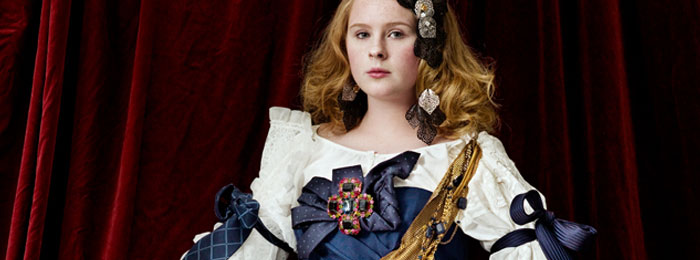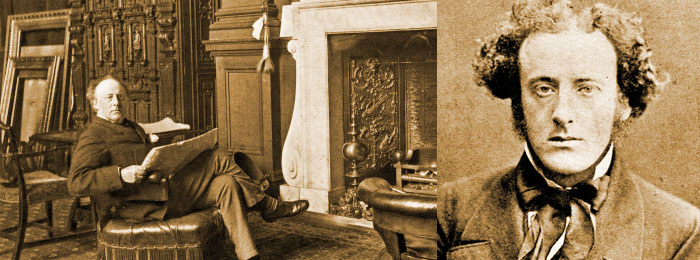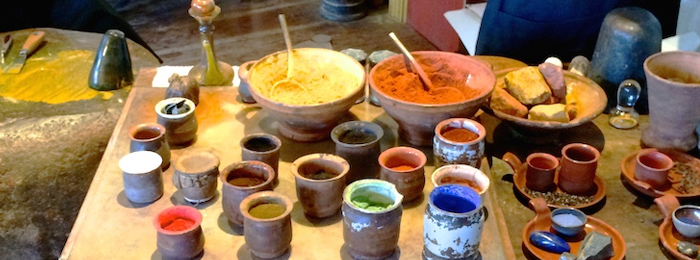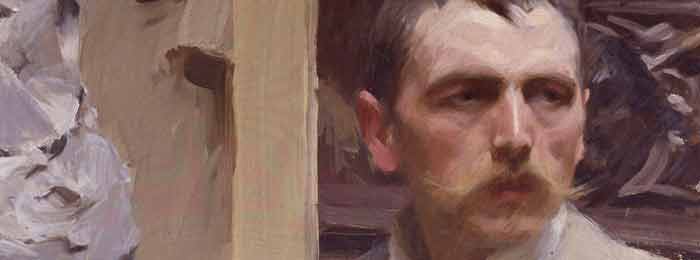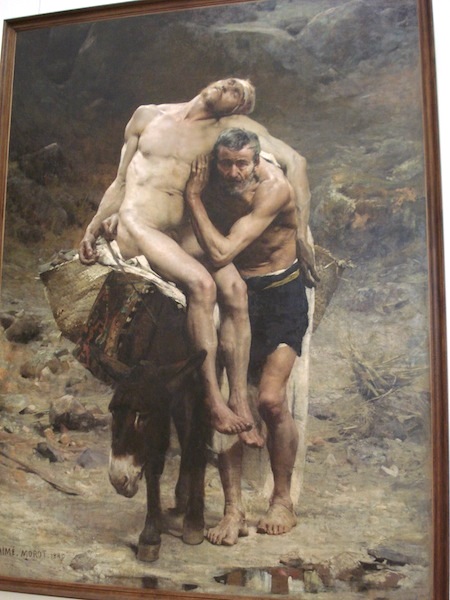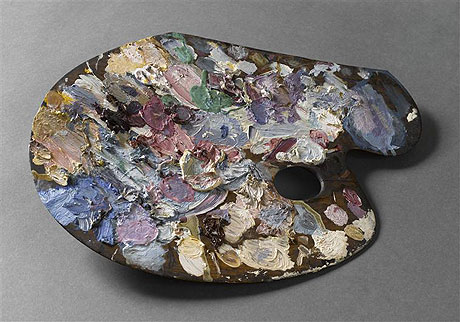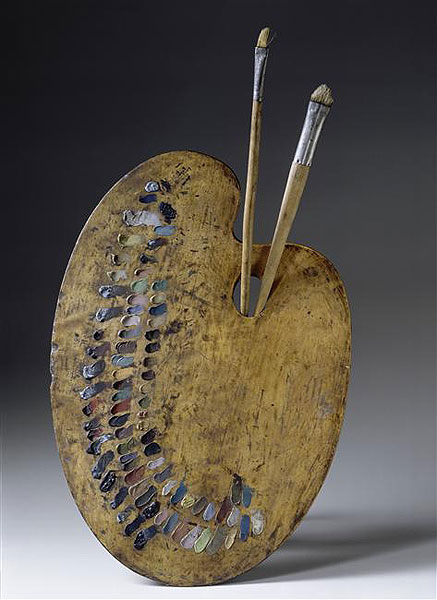On 9 Jan, 2016 With
Photographer Josef Fischnaller shoots portraits that recreate famous paintings by the Old Masters, often including some humorous modern day elements in the scene. To Your Creative Success, Natalie Richy and Vladimir London Web Art Academy Founders
Read More
On 8 Aug, 2015 With
Sir John Everett Millais was an English painter and illustrator and one of the founders of the Pre-Raphaelite Brotherhood. Millais’ Christ In The House Of His Parents was highly controversial because of its realistic portrayal of a working class Holy Family labouring in a messy carpentry workshop. All early works were painted with great attention to detail, often concentrating on the beauty and complexity of the natural world. In paintings such as Ophelia Millais created dense and elaborate pictorial surfaces based on the integration of naturalistic elements. This approach has been described as a kind of “pictorial eco-system”. This style was promoted by the critic John Ruskin, who had defended the Pre-Raphaelites against their critics. Millais’ friendship with Ruskin introduced him to Ruskin’s wife Effie. Soon after they met she modelled for…
Read More
On 24 Jul, 2015 With
The Rembrandt Palette Rembrandt created his portraits with a small palette of colours dominated by dark earth tones and golden highlights. Remember the number of pigments available to the 17th century artist were miniscule when compared to those available to the modern artist. Rembrandt was unusual in that he used around hundred, but less than 20 pigments have been detected in Vermeer’s oeuvre. Portraits by Rembrandt have a special quality- the brilliant use of light to illumine faces, jewels and rich fabrics; the effective use of a limited palette, and the rich, dark, transparent backgrounds all set off the subjects of his portraiture in a way never seen before and often imitated afterwards. It has been said that a painter has…
Read More
On 27 Jun, 2015 With
Palettes of Famous Artists. Zorn Palette Swedish painter Anders Zorn (1860-1920) has long been associated with a limited palette of four colors. Rosemary Hoffman, in the book Northern Light: Nordic Art at the Turn of the Century wrote, “Zorn was noted for executing paintings using a sober color scale limited to white, ochre, vermilion, and ivory black.” Hans Henrik Brummer, writing in the 1986 catalog on Zorn, said “basically his register was limited to black, white, earth yellows and vermilion; other pigments could be used if local accents were needed.” Several art teachers, such as Jeff Watts, use the “Zorn palette” (sometimes substituting cadmium red light for vermilion) as a teaching tool because it provides students with a finite range of color choices with a…
Read More
On 26 Nov, 2011 With
Aimé Morot’s Palette Aimé Morot (1850–1913) was a French painter. Morot was born in Nancy, where he studied under a drawing master named Thierry. He later attended the atelier of Alexandre Cabanel in the Ecole des Beaux-Arts in Paris, but left after only two weeks to continue his studies independently. During this period he spent much of his time studying animals in the Jardin des plantes, and was later to become famous for his paintings of horses, lions and bulls. Despite his lack of attendance at the École, he won the Prix de Rome in 1873. The subject given that year was the Babylonian Captivity. The prize-winning painting is currently in the collection of the École des beaux-arts in Paris, and can be viewed on request. Morot married the daughter of Jean-Léon Gérôme….
Read More
On 17 Nov, 2011 With
Whistler’s Palette James Whistler was an American-born, British-based artist. Lemon Yellow Cadmium Yellow Yellow Ochre Raw Sienna Raw Umber Burnt Sienna Vermilion Venetian Red or Indian Red Rose Madder Cobalt Blue Antwerp Blue (a weak pigment inferior to Prussian Blue) Flake White Ivory Black
Read More
On 1 Sep, 2011 With
Palettes of Famous Painters Of Gustave Moreau, the art critic Charles Blanc, whose writings (still essential reading) and triangle based colour-system are considered the most influential texts on colour theory, wrote in Le Temps, 1881: “One would have to coin a word for the occasion if one wished to characterise the talent of Gustave Moreau, the word colourism for example, which would well convey all that is excessive, superb and prodigious in his love for colour. … It is as if one were in the presence of an illuminator who had been a jeweller before becoming a painter and who, having yielded to the intoxication of colour, had ground rubies, sapphires, emeralds, topazes, opals, pearls and mother of pearl to…
Read More
On 30 Aug, 2011 With
Palettes of Famous Painters Some artists follow Whistler, who believed the management of the palette to be the basis of good painting; others stick to Isaac Newton’s theory of colour. Some artists mix every gradation of colour they will need for a painting before they start, others as they need them. “My freshly arranged palette, brilliant with contrasting colors, is enough to fire my enthusiasm,” noted Delacroix in his Journal in 1850. The French artist was meticulous in his arrangement of colours, and when unwell, would take his palette to bed and spend the entire day just mixing new shades.
Read More
On 25 Aug, 2011 With
Palettes of Famous Painters: The Degas palette The Degas palette above is from earlier in his career, when he was still using the earthy tones common to the Dutch tradition. It lightened considerably in later years as his subject matter altered. Although there are a number of prescribed ways in which to lay out oil paint – light to dark; as per the colour wheel; basic palettes of three colours and white – all artists begin by lining up pigments at the top of the palette and use the remainder of its space for mixing.
Read More
On 22 Aug, 2011 With
Anders Zorn is the famous Swedish painter. He is famous for his paintings of the people of Dalarna, the part of Sweden where he was born, and his nudes in the open space. He earned a world-wide reputation as a portraitist. He made seven journeys to the USA. His models included three different American presidents. His art made him wealthy and he was thus able to build up a considerable collection of art. The objects were not only bought in his native country but also during the many travels he made abroad. In their joint will, Anders and Emma Zorn donated their entire holdings to the Swedish State. Some of his most important works can be seen at the National…
Read More


